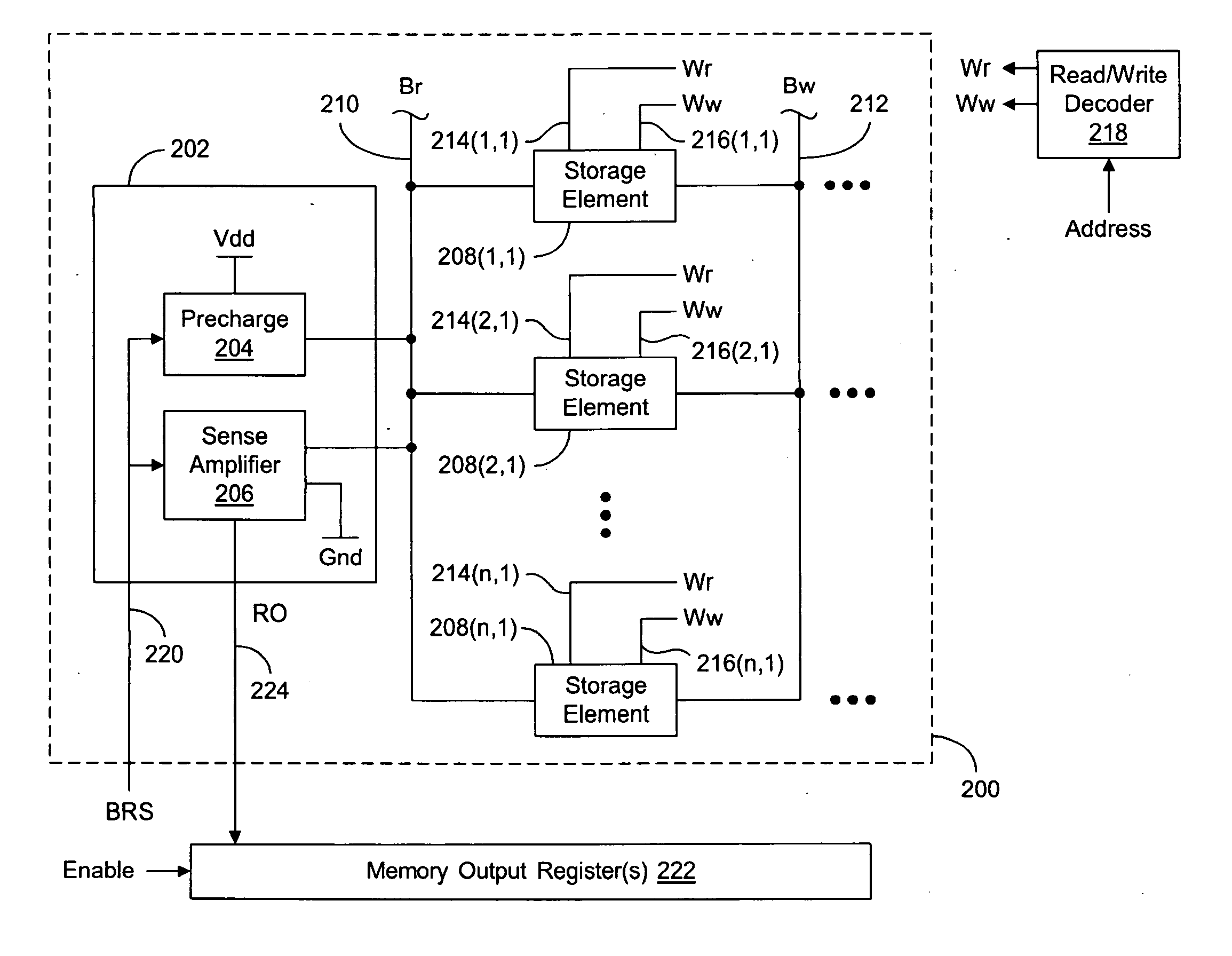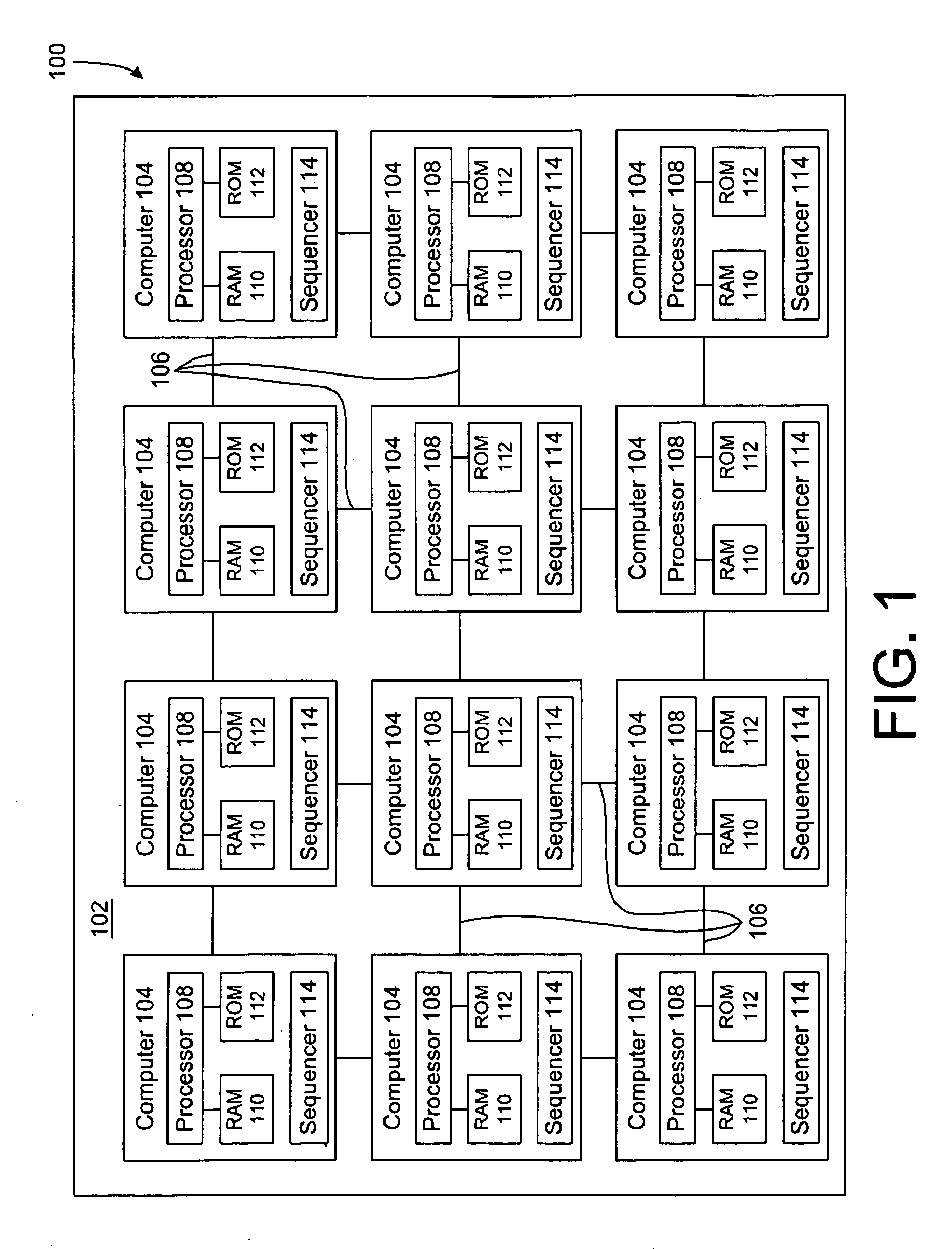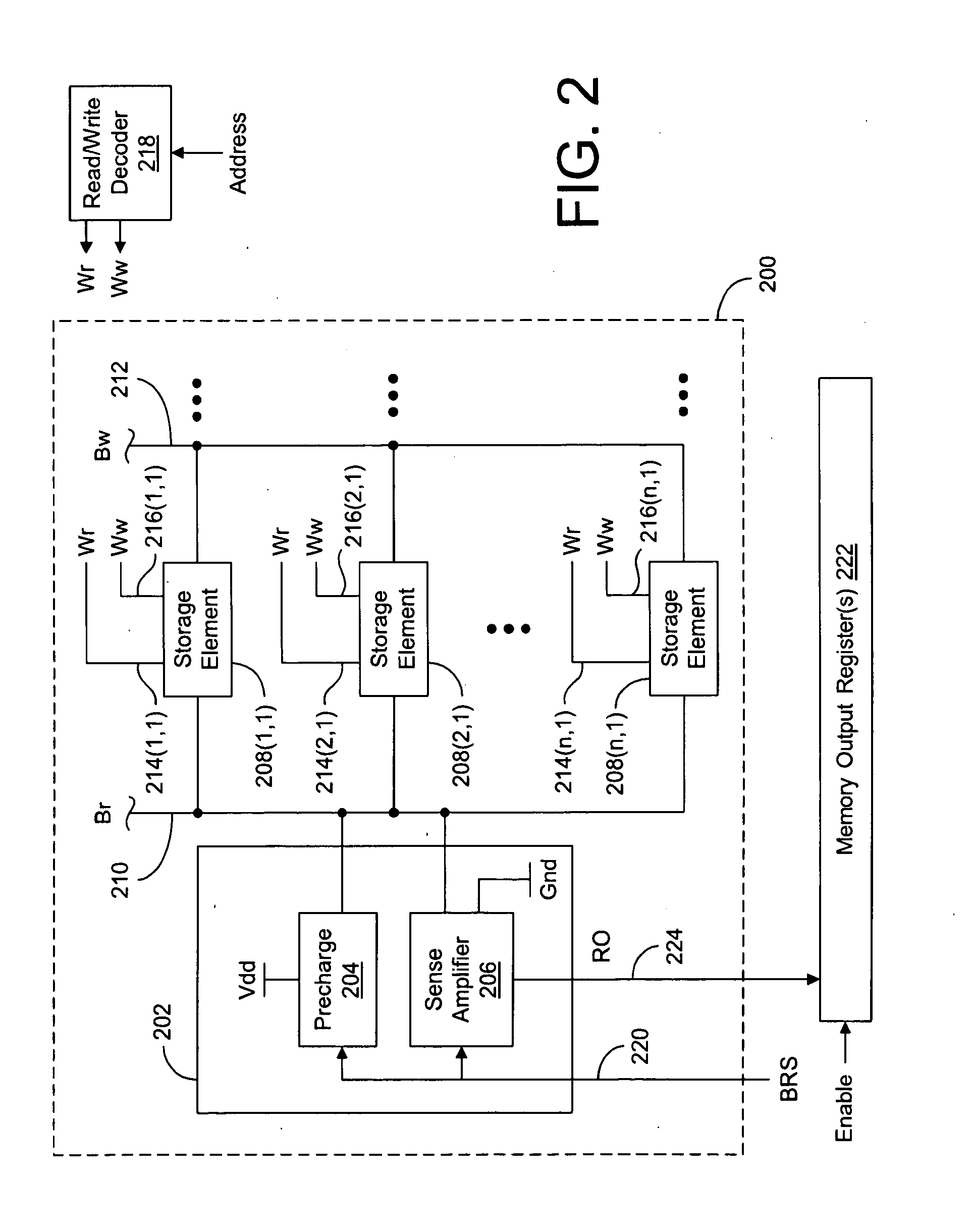System and Method for Reading Memory
a static memory and system technology, applied in the field of static memory operation, can solve the problems of slowing down the reading operation, still disadvantages of the access circuit, and large access circuit size, and achieve the effects of convenient data reading, faster reads, and compact structur
- Summary
- Abstract
- Description
- Claims
- Application Information
AI Technical Summary
Benefits of technology
Problems solved by technology
Method used
Image
Examples
Embodiment Construction
[0023]The present invention overcomes the problems associated with the prior art, by providing a system and method for quickly and efficiently reading data from, for example, Static Random Access Memory (“SRAM”). In the following description, numerous specific details are set forth (e.g., specific circuit layouts) in order to provide a thorough understanding of the invention. Those skilled in the art will recognize, however, that the invention may be practiced apart from these specific details. In other instances, details of well known circuit manufacturing practices (e.g., photolithography, doping, etc.) and components have been omitted, so as not to unnecessarily obscure the present invention.
[0024]FIG. 1 shows a computer array 100 formed on a single die 102. Computer array 100 includes a plurality (twelve in this example) of computers 104 (sometimes also referred to as “cores” or “nodes” in the example of an array) interconnected by a plurality of data paths (e.g., buses) 106. Ac...
PUM
 Login to View More
Login to View More Abstract
Description
Claims
Application Information
 Login to View More
Login to View More - R&D
- Intellectual Property
- Life Sciences
- Materials
- Tech Scout
- Unparalleled Data Quality
- Higher Quality Content
- 60% Fewer Hallucinations
Browse by: Latest US Patents, China's latest patents, Technical Efficacy Thesaurus, Application Domain, Technology Topic, Popular Technical Reports.
© 2025 PatSnap. All rights reserved.Legal|Privacy policy|Modern Slavery Act Transparency Statement|Sitemap|About US| Contact US: help@patsnap.com



